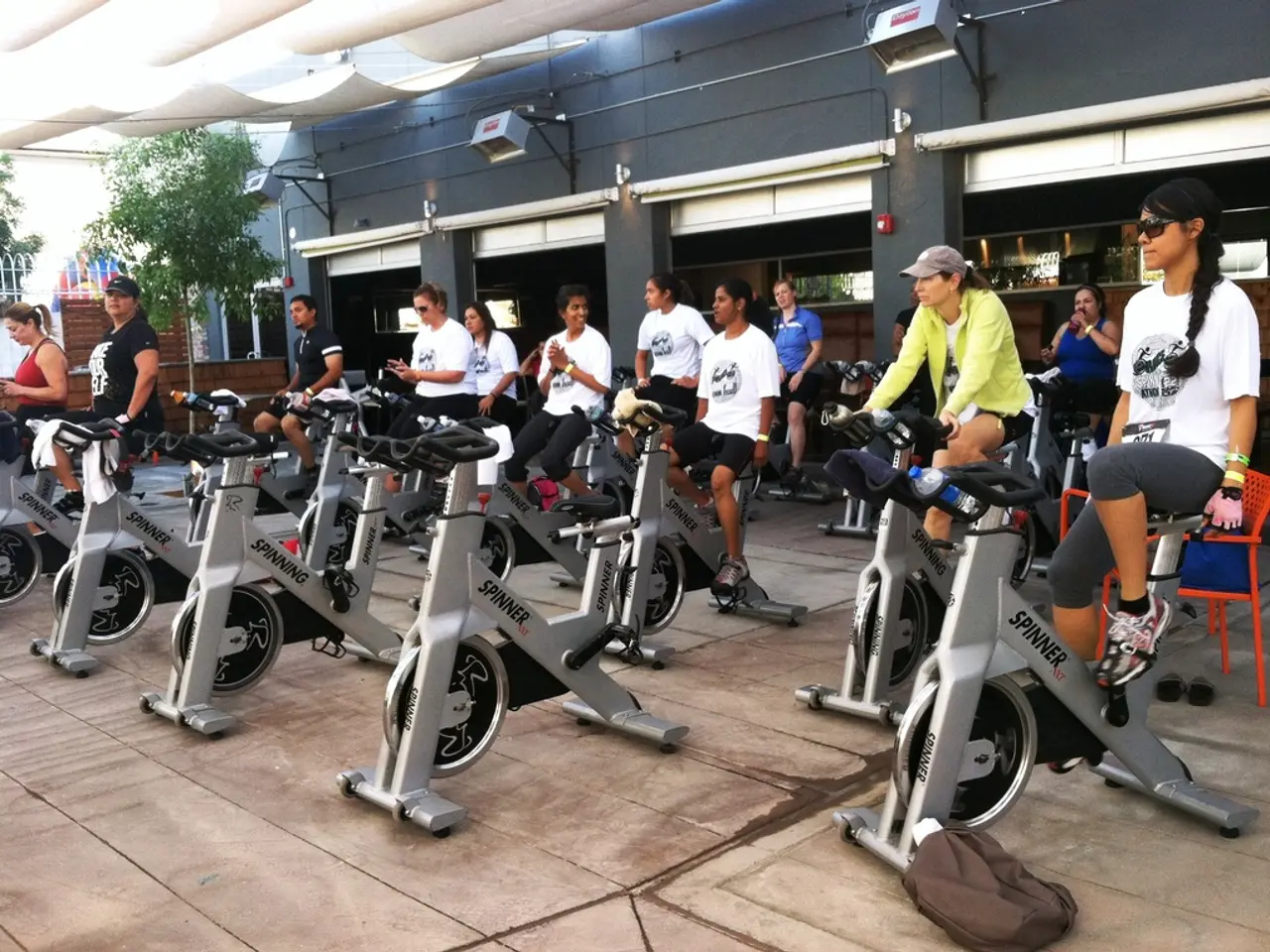Lifestyle Adjustments May Extend Your Lifespan, Scientific Research Suggests. Simplify Integration into Your Daily Routine with Expert Guidance
In today's fast-paced world, it's easy to spend long hours sitting at work or in front of screens. However, studies show that this sedentary lifestyle can have serious health consequences, including an increased risk of premature death, heart disease, type 2 diabetes, and obesity.
To combat these risks, focus on integrating Non-Exercise Activity Thermogenesis (NEAT) and "movement snacks" into your daily routine. NEAT refers to all the movement we do throughout the day that isn't part of a formal workout, such as walking, doing chores, standing instead of sitting, or even fidgeting.
One way to break up prolonged sitting is by standing more often. Using standing desks or taking regular standing breaks can help boost metabolism and reduce disease risk. Another strategy is to do light activity such as wall sits or squats between periods of sitting.
Incorporating short, vigorous or moderate activity bouts can also have significant health benefits. Even just a few minutes of brisk walking, taking stairs, jogging briefly, or doing jumping jacks can decrease heart attack and stroke risk by up to 50%. Climbing more than five flights of stairs at home per day is associated with a 7% to 9% lower risk of all-cause mortality.
Simple daily exercise moves like squats, lunges, and wall sits can improve functional movement and joint health, which support overall cardiovascular and metabolic health. Performing chores faster can increase the demand on your arms and legs and up your heart rate. Carrying grocery purchases instead of using a cart can help improve fitness.
Walking or biking to nearby errands instead of driving can also increase activity levels. Taking work meetings outside can help counteract the health harms of sitting for too long. Parking as far away from stores as possible can help add brief periods of activity to your schedule and increase your daily step count.
Using a desk treadmill or walking pad during the workday can increase activity levels as well. Adding exercises like walking lunges or step-ups during walks can further enhance the benefits. Skipping a stair or two increases the demand on your legs and improves strength and blood sugar control.
Aim to accumulate at least 150 minutes of moderate-intensity exercise per week, but understand that even small amounts of NEAT, like house chores or movement breaks, yield major benefits. Setting a timer to walk for five to 10 minutes every hour can amount to significant exercise over the course of a day.
Engaging in resistance exercises like lifting weights, squats, or other resistance exercises during leisure activities can be beneficial. Breaking up bouts of standing with movement breaks is recommended to counteract the potential health issues associated with standing for extended periods.
By making these movement patterns habitual—standing more, moving frequently, and adding short exercise bursts—you enhance metabolism, improve cardiovascular function, and lower the risk of diabetes and obesity without necessarily needing long gym sessions.
In summary, to optimize daily movement for health:
- Stand more and sit less.
- Take frequent "movement snacks" like squats or walking breaks.
- Use brief moderate-to-vigorous activities to raise heart rate.
- Include mobility and strength moves daily.
- Avoid prolonged sedentary behavior.
These approaches maximize NEAT and improve overall metabolic and heart health effectively.
- Including daily movements like squats, wall sits, and walking breaks can boost metabolism, lower the risk of diabetes and obesity, and improve overall heart health.
- Performing simple exercises during leisure activities, such as lifting weights or doing squats, can serve as beneficial resistance exercises that support overall metabolic and cardiovascular health.
- Enhance workplace wellness by incorporating NEAT activities and taking movement snacks, stand breaks, or brisk walks during work hours to reduce the health risks associated with a sedentary lifestyle.




